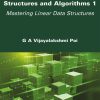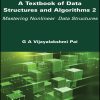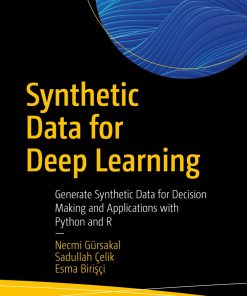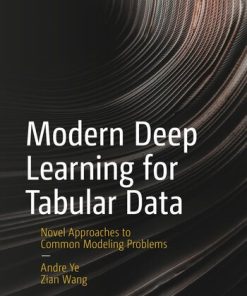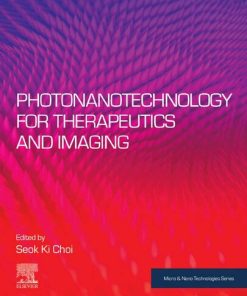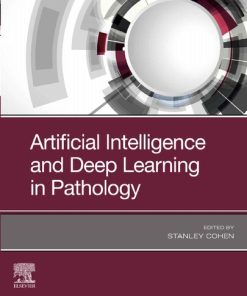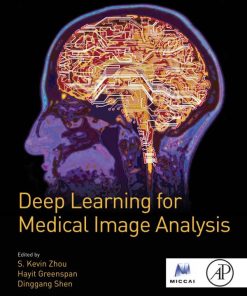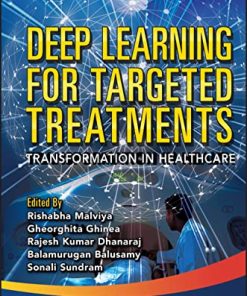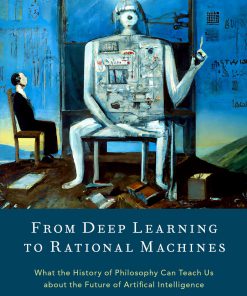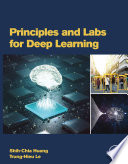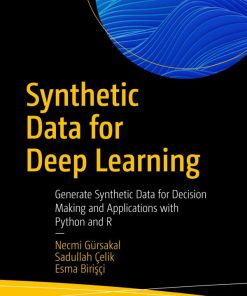(Ebook PDF) Many Sorted Algebras for Deep Learning and Quantum Technology 1st Edition by Charles Giardina ISBN 9780443136986 044313698X full chapters
$50.00 Original price was: $50.00.$25.00Current price is: $25.00.
(Ebook PDF) Many Sorted Algebras for Deep Learning and Quantum Technology 1st Edition by Charles Giardina-Ebook PDF Instant Download/Delivery:9780443136986, 044313698X
Instant download Full Chapter of Many Sorted Algebras for Deep Learning and Quantum Technology 1st Edition after payment
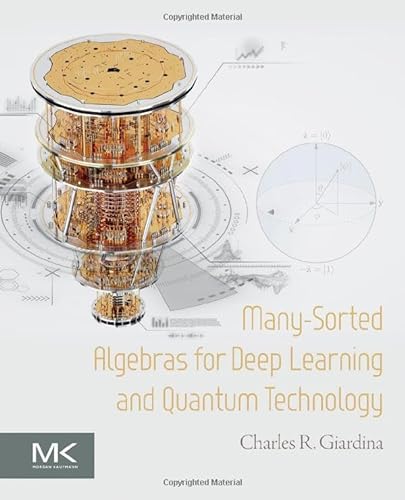
Product details:
ISBN 10:044313698X
ISBN 13:9780443136986
Author: Charles R. Giardina
Many-Sorted Algebras for Deep Learning and Quantum Technology presents a precise and rigorous description of basic concepts in Quantum technologies and how they relate to Deep Learning and Quantum Theory. Current merging of Quantum Theory and Deep Learning techniques provides a need for a text that can give readers insight into the algebraic underpinnings of these disciplines. Although analytical, topological, probabilistic, as well as geometrical concepts are employed in many of these areas, algebra exhibits the principal thread. This thread is exposed using Many-Sorted Algebras (MSA). In almost every aspect of Quantum Theory as well as Deep Learning more than one sort or type of object is involved. For instance, in Quantum areas Hilbert spaces require two sorts, while in affine spaces, three sorts are needed. Both a global level and a local level of precise specification is described using MSA. At a local level operation involving neural nets may appear to be very algebraically different than those used in Quantum systems, but at a global level they may be identical. Again, MSA is well equipped to easily detail their equivalence through text as well as visual diagrams. Among the reasons for using MSA is in illustrating this sameness. Author Charles R. Giardina includes hundreds of well-designed examples in the text to illustrate the intriguing concepts in Quantum systems. Along with these examples are numerous visual displays. In particular, the Polyadic Graph shows the types or sorts of objects used in Quantum or Deep Learning. It also illustrates all the inter and intra sort operations needed in describing algebras. In brief, it provides the closure conditions. Throughout the text, all laws or equational identities needed in specifying an algebraic structure are precisely described.
Table of Contents:
- Chapter 1. Introduction to quantum many-sorted algebras
- Abstract
- 1.1 Introduction to quantum many-sorted algebras
- References
- Chapter 2. Basics of deep learning
- Abstract
- 2.1 Machine learning and data mining
- 2.2 Deep learning
- 2.3 Deep learning and relationship to quantum
- 2.4 Affine transformations for nodes within neural net
- 2.5 Global structure of neural net
- 2.6 Activation functions and cost functions for neural net
- 2.7 Classification with a single-node neural net
- 2.8 Backpropagation for neural net learning
- 2.9 Many-sorted algebra description of affine space
- 2.10 Overview of convolutional neural networks
- 2.11 Brief introduction to recurrent neural networks
- References
- Chapter 3. Basic algebras underlying quantum and NN mechanisms
- Abstract
- 3.1 From a vector space to an algebra
- 3.2 An algebra of time-limited signals
- 3.3 The commutant in an algebra
- 3.4 Algebra homomorphism
- 3.5 Hilbert space of wraparound digital signals
- 3.6 Many-sorted algebra description of a Banach space
- 3.7 Banach algebra as a many-sorted algebra
- 3.8 Many-sorted algebra for Banach* and C* algebra
- 3.9 Banach* algebra of wraparound digital signals
- 3.10 Complex-valued wraparound digital signals
- References
- Chapter 4. Quantum Hilbert spaces and their creation
- Abstract
- 4.1 Explicit Hilbert spaces underlying quantum technology
- 4.2 Complexification
- 4.3 Dual space used in quantum
- 4.4 Double dual Hilbert space
- 4.5 Outer product
- 4.6 Multilinear forms, wedge, and interior products
- 4.7 Many-sorted algebra for tensor vector spaces
- 4.8 The determinant
- 4.9 Tensor algebra
- 4.10 Many-sorted algebra for tensor product of Hilbert spaces
- 4.11 Hilbert space of rays
- 4.12 Projective space
- References
- Chapter 5. Quantum and machine learning applications involving matrices
- Abstract
- 5.1 Matrix operations
- 5.2 Qubits and their matrix representations
- 5.3 Complex representation for the Bloch sphere
- 5.4 Interior, exterior, and Lie derivatives
- 5.5 Spectra for matrices and Frobenius covariant matrices
- 5.6 Principal component analysis
- 5.7 Kernel principal component analysis
- 5.8 Singular value decomposition
- References
- Chapter 6. Quantum annealing and adiabatic quantum computing
- Abstract
- 6.1 Schrödinger’s characterization of quantum
- 6.2 Quantum basics of annealing and adiabatic quantum computing
- 6.3 Delta function potential well and tunneling
- 6.4 Quantum memory and the no-cloning theorem
- 6.5 Basic structure of atoms and ions
- 6.6 Overview of qubit fabrication
- 6.7 Trapped ions
- 6.8 Super-conductance and the Josephson junction
- 6.9 Quantum dots
- 6.10 D-wave adiabatic quantum computers and computing
- 6.11 Adiabatic theorem
- Reference
- Further reading
- Chapter 7. Operators on Hilbert space
- Abstract
- 7.1 Linear operators, a MSA view
- 7.2 Closed operators in Hilbert spaces
- 7.3 Bounded operators
- 7.4 Pure tensors versus pure state operators
- 7.5 Trace class operators
- 7.6 Hilbert-Schmidt operators
- 7.7 Compact operators
- References
- Chapter 8. Spaces and algebras for quantum operators
- Abstract
- 8.1 Banach and Hilbert space rank, boundedness, and Schauder bases
- 8.2 Commutative and noncommutative Banach algebras
- 8.3 Subgroup in a Banach algebra
- 8.4 Bounded operators on a Hilbert space
- 8.5 Invertible operator algebra criteria on a Hilbert space
- 8.6 Spectrum in a Banach algebra
- 8.7 Ideals in a Banach algebra
- 8.8 Gelfand-Naimark-Segal construction
- 8.9 Generating a C* algebra
- 8.10 The Gelfand formula
- References
- Chapter 9. Von Neumann algebra
- Abstract
- 9.1 Operator topologies
- 9.2 Two basic von Neumann algebras
- 9.3 Commutant in a von Neumann algebra
- 9.4 The Gelfand transform
- References
- Chapter 10. Fiber bundles
- Abstract
- 10.1 MSA for the algebraic quotient spaces
- 10.2 The topological quotient space
- 10.3 Basic topological and manifold concepts
- 10.4 Fiber bundles from manifolds
- 10.5 Sections in a fiber bundle
- 10.6 Line and vector bundles
- 10.7 Analytic vector bundles
- 10.8 Elliptic curves over C
- 10.9 The quaternions
- 10.10 Hopf fibrations
- 10.11 Hopf fibration with bloch sphere S2, the one-qubit base
- 10.12 Hopf fibration with sphere S4, the two-qubit base
- References
- Chapter 11. Lie algebras and Lie groups
- Abstract
- 11.1 Algebraic structure
- 11.2 MSA view of a Lie algebra
- 11.3 Dimension of a Lie algebra
- 11.4 Ideals in a Lie algebra
- 11.5 Representations and MSA of a Lie group of a Lie algebra
- 11.6 Briefing on topological manifold properties of a Lie group
- 11.7 Formal description of matrix Lie groups
- 11.8 Mappings between Lie groups and Lie algebras
- 11.9 Complexification of Lie algebras
- References
- Chapter 12. Fundamental and universal covering groups
- Abstract
- 12.1 Homotopy a graphical view
- 12.2 Initial point equivalence for loops
- 12.3 MSA description of the fundamental group
- 12.4 Illustrating the fundamental group
- 12.5 Homotopic equivalence for topological spaces
- 12.6 The universal covering group
- 12.7 The Cornwell mapping
- References
- Chapter 13. Spectra for operators
- Abstract
- 13.1 Spectral classification for bounded operators
- 13.2 Spectra for operators on a Banach space
- 13.3 Symmetric, self-adjoint, and unbounded operators
- 13.4 Bounded operators and numerical range
- 13.5 Self-adjoint operators
- 13.6 Normal operators and nonbounded operators
- 13.7 Spectral decomposition
- 13.8 Spectra for self-adjoint, normal, and compact operators
- 13.9 Pure states and density functions
- 13.10 Spectrum and resolvent set
- 13.11 Spectrum for nonbounded operators
- 13.12 Brief descriptions of spectral measures and spectral theorems
- References
- Chapter 14. Canonical commutation relations
- Abstract
- 14.1 Isometries and unitary operations
- 14.2 Canonical hypergroups—a multisorted algebra view
- 14.3 Partial isometries
- 14.4 Multisorted algebra for partial isometries
- 14.5 Stone’s theorem
- 14.6 Position and momentum
- 14.7 The Weyl form of the canonical commutation relations and the Heisenberg group
- 14.8 Stone-von Neumann and quantum mechanics equivalence
- 14.9 Symplectic vector space—a multisorted algebra approach
- 14.10 The Weyl canonical commutation relations C∗ algebra
- References
- Chapter 15. Fock space
- Abstract
- 15.1 Particles within Fock spaces and Fock space structure
- 15.2 The bosonic occupation numbers and the ladder operators
- 15.3 The fermionic Fock space and the fermionic ladder operators
- 15.4 The Slater determinant and the complex Clifford space
- 15.5 Maya diagrams
- 15.6 Maya diagram representation of fermionic Fock space
- 15.7 Young diagrams representing quantum particles
- 15.8 Bogoliubov transform
- 15.9 Parafermionic and parabosonic spaces
- 15.10 Segal–Bargmann–Fock operations
- 15.11 Many-body systems and the Landau many-body expansion
- 15.12 Single-body operations
- 15.13 Two-body operations
- References
- Chapter 16. Underlying theory for quantum computing
- Abstract
- 16.1 Quantum computing and quantum circuits
- 16.2 Single-qubit quantum gates
- 16.3 Pauli rotational operators
- 16.4 Multiple-qubit input gates
- 16.5 The swapping operation
- 16.6 Universal quantum gate set
- 16.7 The Haar measure
- 16.8 Solovay–Kitaev theorem
- 16.9 Quantum Fourier transform and phase estimation
- 16.10 Uniform superposition and amplitude amplification
- 16.11 Reflections
- References
- Chapter 17. Quantum computing applications
- Abstract
- 17.1 Deutsch problem description
- 17.2 Oracle for Deutsch problem solution
- 17.3 Quantum solution to Deutsch problem
- 17.4 Deutsch-Jozsa problem description
- 17.5 Quantum solution for the Deutsch-Jozsa problem
- 17.6 Grover search problem
- 17.7 Solution to the Grover search problem
- 17.8 The Shor’s cryptography problem from an algebraic view
- 17.9 Solution to the Shor’s problem
- 17.10 Elliptic curve cryptography
- 17.11 MSA of elliptic curve over a finite field
- 17.12 Diffie–Hellman EEC key exchange
- References
- Further reading
- Chapter 18. Machine learning and data mining
- Abstract
- 18.1 Quantum machine learning applications
- 18.2 Learning types and data structures
- 18.3 Probably approximately correct learning and Vapnik-Chervonenkis dimension
- 18.4 Regression
- 18.5 K-nearest neighbor classification
- 18.6 K-nearest neighbor regression
- 18.7 Quantum K-means applications
- 18.8 Support vector classifiers
- 18.9 Kernel methods
- 18.10 Radial basis function kernel
- 18.11 Bound matrices
- 18.12 Convolutional neural networks and quantum convolutional neural networks
- References
- Chapter 19. Reproducing kernel and other Hilbert spaces
- Abstract
- 19.1 Algebraic solution to harmonic oscillator
- 19.2 Reproducing kernel Hilbert space over C and the disk algebra
- 19.3 Reproducing kernel Hilbert space over R
- 19.4 Mercer’s theorem
- 19.5 Spectral theorems
- 19.6 The Riesz-Markov theorem
- 19.7 Some nonseparable Hilbert spaces
- 19.8 Separable Hilbert spaces are isometrically isomorphic to l2
- References
- Appendix A. Hilbert space of wraparound digital signals
- References
- Appendix B. Many-sorted algebra for the description of a measurable and measure spaces
- Example B.1
- Example B.2
- Example B.3
- Example B.4
- Appendix C. Elliptic curves and Abelian group structure
- Appendix D. Young diagrams
- Example D.1
- References
- Appendix E. Young diagrams and the symmetric group
- Example E.1
- Example E.2
- References
- Appendix F. Fundamental theorems in functional analysis
- Example F.1
- Example F.2
- Appendix G. Sturm–Liouville differential equations and consequences
- Example G.1
- Example G.2
- Example G.3
- Example G.4
- Example G.5
- Example G.6
- Example G.7
People also search:
longest sorted subsequence
sort increasing order python
deep algebra
many-sorted algebra
deep learning sorting algorithm
Tags:
Charles Giardina,Many Sorted Algebras,Deep Learning,Quantum Technology
You may also like…
Computers - Artificial Intelligence (AI)
Computers - Computers - General & Miscellaneous
Engineering
Photonanotechnology for Therapeutics and Imaging 1st Edition by Choi 0128178416 9780128178416
Computers - Artificial Intelligence (AI)
Artificial Intelligence and Deep Learning in Pathology 1st Edition
Medicine
Deep Learning for Medical Image Analysis 1st Edition by Kevin Zhou 0128104090 9780128104095
Computers - Artificial Intelligence (AI)
Deep Learning for Targeted Treatments: Transformation in Healthcare 1st Edition Rishabha Malviya
Computers - Artificial Intelligence (AI)
From Deep Learning to Rational Machines 1st Edition Cameron J. Buckner
Computers & Technology


